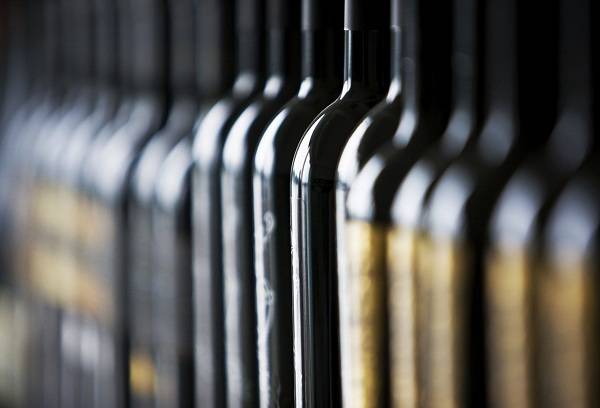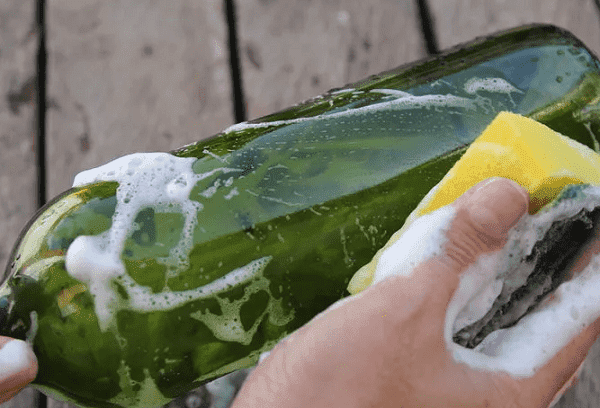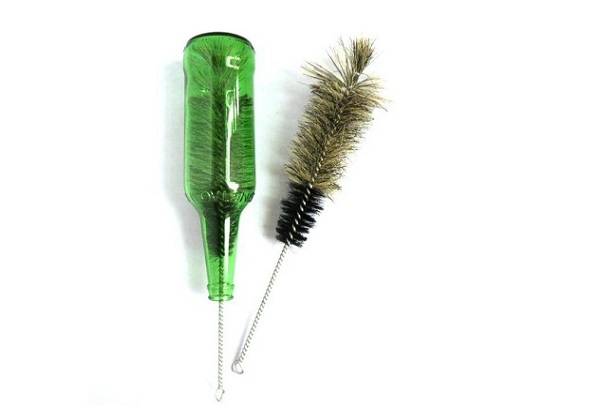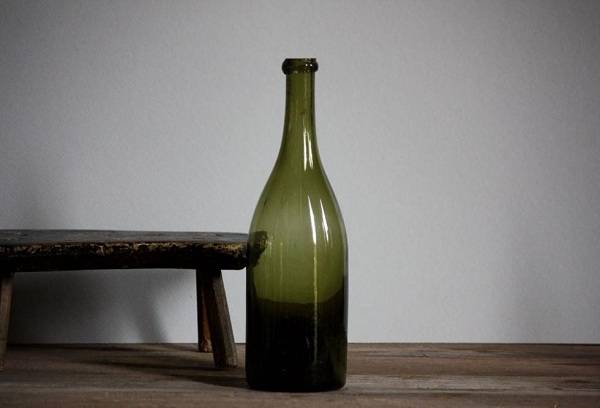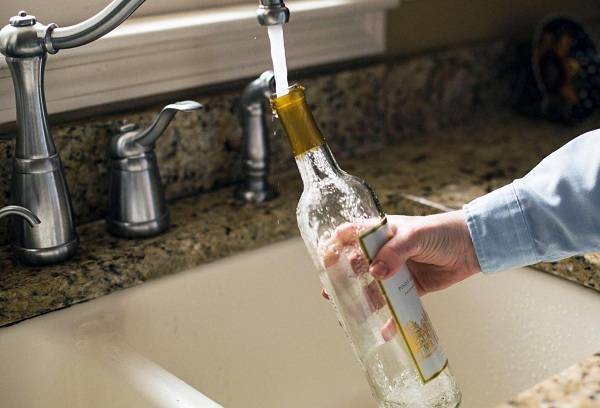How and with what to wash a narrow-necked wine bottle
Content:
Fans of homemade wine and other home-made drinks often use 20-liter glass containers to produce their masterpieces. Taking into account the peculiarities of the composition of such products and the specific design, many winemakers are faced with the question of how to wash a bottle of wine with a narrow neck, in order to subsequently use it for the same purpose.
A lot of impact options have been developed, but, regardless of the approach, you always need to remember one important rule - the earlier you start processing the container, the less hassle will be spent on achieving the desired result. If you leave a dirty bottle for several months, then washing it from sediment and an unpleasant odor will be very problematic.
Important points of the process
Cleaning the container of wine will go faster and will not cause much trouble if you adhere to the following rules:
- Initially, the product must be soaked in warm water. If there is such an opportunity, it is better not just to fill the bottle, but to place it in warm water, then the sediment will lag behind more quickly.
- After each cleaning option (if it did not give an ideal result), the item must be dried before repeating the approach or trying something new. The alternation of chemical effects using clean water and dry air will destroy even the most persistent sediment.
- When trying to remove plaque inside the bottle, the law of gravity cannot be neglected. If you turn the bottle so that the problem area is on top, it will gradually crumble under its own weight. True, given the dimensions of the subject, this is not so simple.
Tip: Glass is not plastic, it practically does not hold aromas. Often the cause of an unpleasant odor, which seems to come from the container, is an old or damaged cover. Do not try to wash it or disinfect it, it is better to just replace it.
- Despite the fact that the glass in the bottles for wine is used very thick, it is not so difficult to break it. In the process of cleaning, do not use coarse sand, pebbles, small pebbles. They really effectively break up a dense precipitate, but can leave scratches on the inner surface of the product, which in the future will lead to a decrease in the strength of the material.
If the bottle has not been cleaned for so long that its internal surfaces are covered with mold, then cleaning agents alone will not succeed. You will have to connect disinfectants or professional sterilization methods.
Simple but effective methods
In cases where the pollution is very fresh or does not differ in excessive density, you can try to clean the bottleneck with a narrow neck in one of the following ways:
- Brush. It is clear that this can only be a special device with a very long handle and fluffy dense pile. It easily passes through the throat of the product and allows you to wipe even the most persistent dirt.
- The pressure of the jet. If a watering hose is available, then by regulating the intensity of the water supply, it is again possible to qualitatively clean the inside of the bottle.
- Detergents. Fresh dirt can be easily washed with the most common dishwashing detergents. The main thing is not just to fill the product into the container, but also thoroughly shake it so that the effect affects all dirty areas.
- Soda. Just pouring soda into a bottle of water will produce virtually no result. The composition slightly softens the sediment, but does not completely eliminate it.This approach must be combined with mechanical stress, for example, working with a brush or sponge on the holder.
- Vinegar. This product will not only dissolve sediment, plaque or scale, facilitating their discharge, but also disinfect the container. True, you need to resort to this approach only if time does not run out and the product can be aired in the fresh air for a long time after cleaning, otherwise traces of a pungent odor will remain for some time.
- Fine sand. First, we fall asleep fine sand calcined on a baking sheet, then pour water. If you actively shake the container, it will be perfectly clean. The main thing is to make sure after that that all the sand was washed.
Some owners try to clean the bottle with buckwheat, but in practice this method is not as good as it seems. The food component softens under the influence of moisture, as a result of which its particles exfoliate and adhere to the glass. They can be almost invisible until they begin to rot and spoil the taste and aroma of the drink, which is stored in a container.
Unusual approaches and their features
In addition to the above approaches, there are a couple of methods that can remove dirt even from a tank that has stood uncleaned for several months.
- Newspapers. Finely tear newsprint and poke it through the neck of a bottle. It needs to be filled in about a quarter. Then we pour three liters of clean water into the container and wait until the paper swells. Then we begin to make intense shaking movements in all directions to clean all areas of the glass.
- The cloth. A similar method, but first we fill the bottle with clean water diluted with a liter of river or swamp liquid. Leave the container for a few days until it “blooms”. Then we put unnecessary thin fabric through the hole. When it gets wet, we begin to drain the liquid, while smoothing the material (with some stick) so that it sticks to the walls of the container. After that, slowly pull the cut, wiping the bottle from the inside. Rinse the container several times.
Before you start using a clean bottle, it is recommended to dry and clog it. After 3-5 days (if possible, it is better to wait a couple of weeks), open the container and check if there is an unpleasant smell coming from it, if there are any traces of dirt on the walls from the inside. If at least something is suspicious, we repeat the cleaning from the very beginning, after which we again arrange a check.
